Elementary OS is a Ubuntu-based GNU/Linux distribution, which started as a theme and application set for Ubuntu which later turns out to be an independent Linux distribution. It inherits the legacy of Ubuntu OS and shares Ubuntu’s Software Center for package management.
It is known for its fast, open, and privacy-respecting distribution and replacement to macOS and Windows with a simple yet effective user interface, beautiful themes, and wallpaper that serve as eye-candy to users and one of the best Linux OS for Linux newbies.
It uses Epiphany as a web browser, Plank-as dock, Pantheon as a shell, Code (a simple text editor), Gala (based on Mutter) as a windows Manager, Pantheon Greeter-Session Manager, Geary-email client, Pantheon Mail, Music Audio Player, Pantheon Files – file manager and other applications that are closely associated with the OS.
The latest release of elementary OS 8 Circe is based on Ubuntu 24.04 LTS which comes with several notable improvements and features, making it one of the most polished releases of this popular Linux-based operating system.
elementary OS 8: What’s New?
Here’s a quick overview of what’s new:
- Applications Settings now feature a split-pane layout for easier navigation.
- Dock and panel remain stationary during workspace switching, improving multitasking.
- Quick settings include Dark Mode and Screen Rotation Lock for devices with accelerometers.
- Developers benefit from updated Flatpak platforms and LibPortal for secure access to system features.
- Onboarding navigation is improved for better keyboard and screen reader compatibility.
- Bluetooth components are now separated into distinct packages for easier maintenance.
- Font Viewer is delivered as a Flatpak for seamless updates.
- Music app allows direct audio file opening and includes a sticky toolbar style when scrolling.
- Sessions are renamed for clarity: “Secure Session” for Wayland and “Compatibility Session” for X11.
- The system now supports 64-bit time for future compatibility beyond 2038.
- Integration of SystemD improves stability and session management.
- Monthly and early access builds are available to GitHub sponsors for testing.
Download elementary OS 8 Circe ISO
It is absolutely free to use Elementary OS. Free as in the beer as well as free as in the speech. If you want to donate to this awesome project you may click on the amount ‘pay it and Download‘.
You may add a custom amount if you want. If you don’t want to pay at this time you may just download Elementary OS by entering ‘0‘ in the custom field.
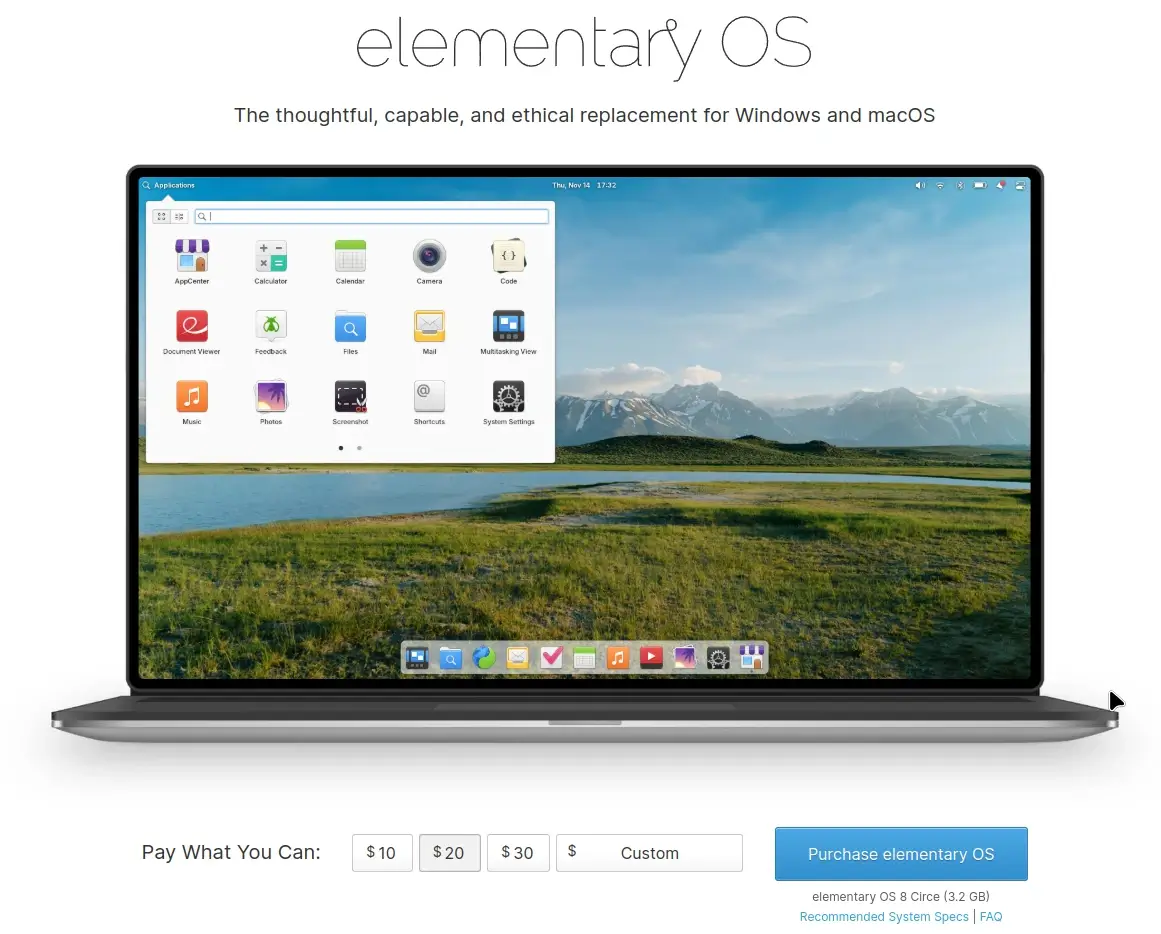
After you’ve downloaded the ISO image from the official site of the elementary OS for your system architecture, we will install and test it.
Creating a Bootable elementary OS 8 Circe
After downloading the elementary OS installation image, the next step is to create a bootable USB drive. On Windows, you can use a tool like Rufus, and on Linux, you can use the dd command to copy the installation image to the USB drive.
If you’re aiming to become a skilled server sysadmin, you may prefer using a fast and efficient command-line tool like dd.
To check for connected devices, plug in the USB stick and open a terminal, and then, run the following command to list all the devices currently attached to your system.
lsblk
Once you’ve identified the USB device, create a bootable drive by copying the elementary OS installation image onto it in a single step.
dd if=elementaryos-8.0-stable.20241122rc.iso of=/dev/sdc bs=8M status=progress
Installation of elementary OS 8 Circe
After making a bootable USB stick, insert your bootable media and select the boot option from BIOS, and restart the machine to boot from bootable media.
After booting from the USB, you’ll see the language selection screen, select the language for the installation process, and click Next.
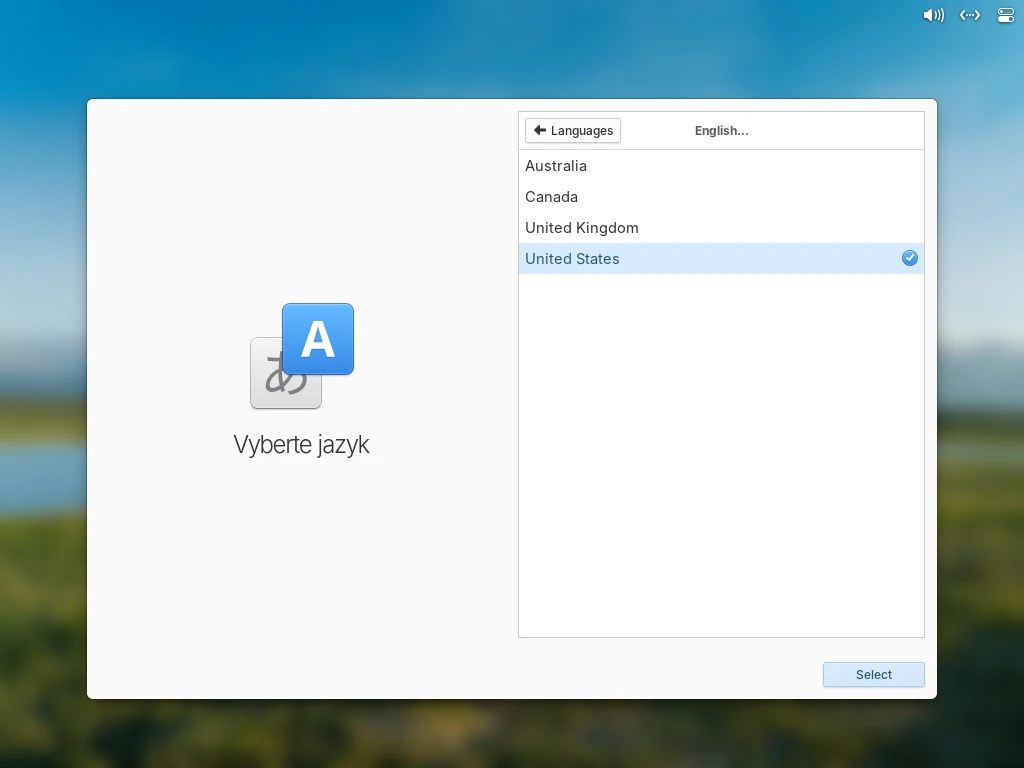
Select the appropriate keyboard layout (US English is the default, but you can select other layouts as needed).
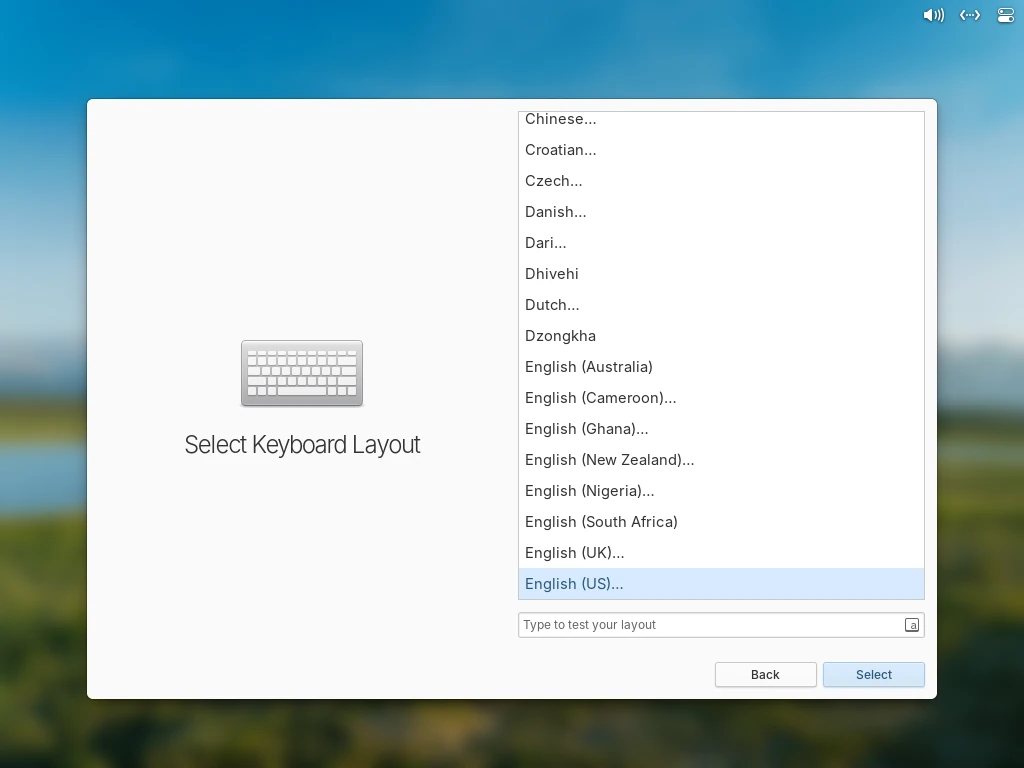
Next, select the option “Erase Disk and Install Elementary OS“, which will wipe the entire disk and install Elementary OS 8.
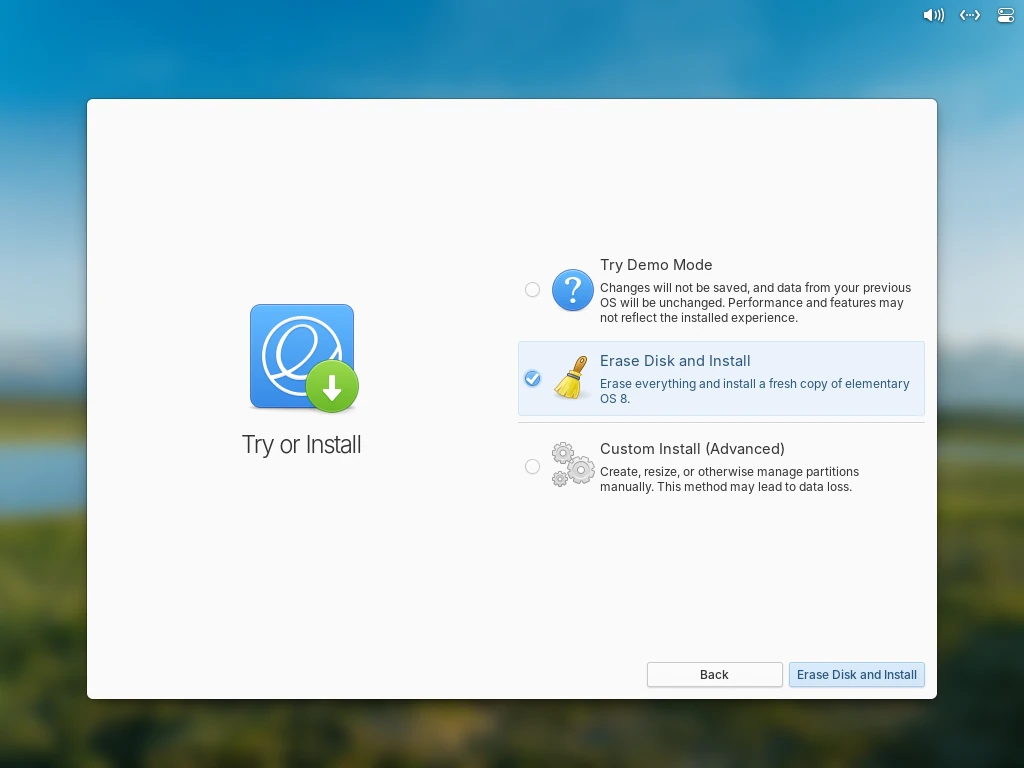
If you are using a single drive for installation, make sure to select the correct one.
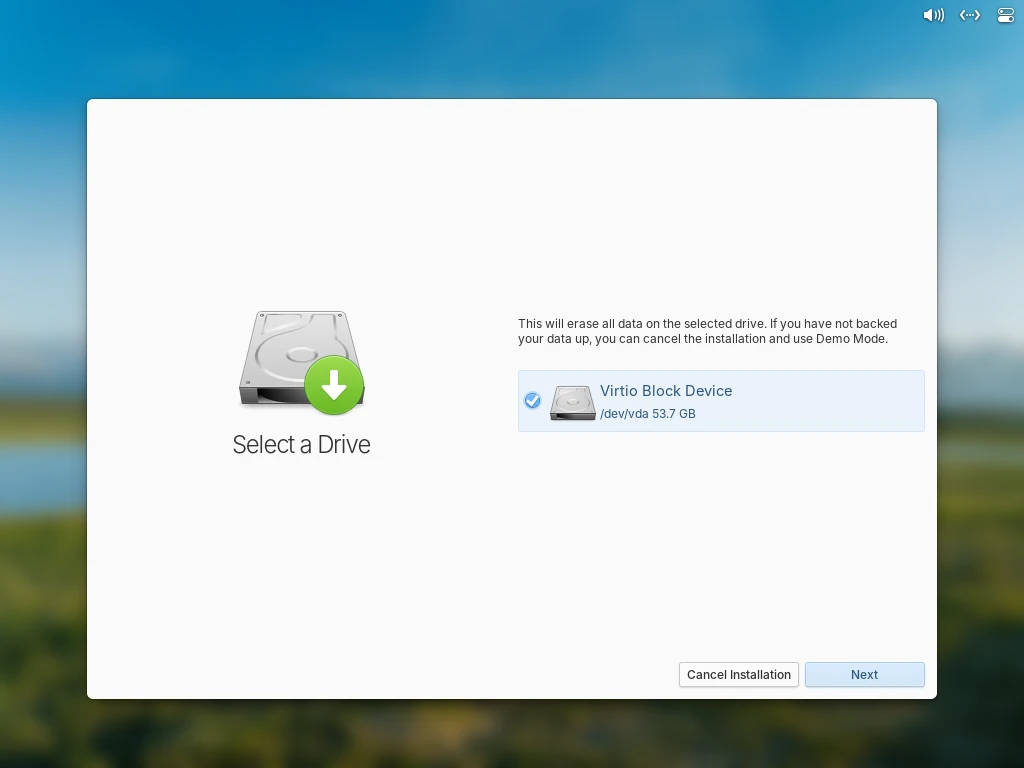
When you see the option “Encrypt this disk“, select “No” if you don’t want to enable encryption, which will skip the encryption step, allowing you to proceed without setting a password for disk decryption at boot.
Choosing “No” will speed up the installation process but leave your data unprotected in case of physical access to your system. If security isn’t a major concern, this choice will provide a quicker setup.
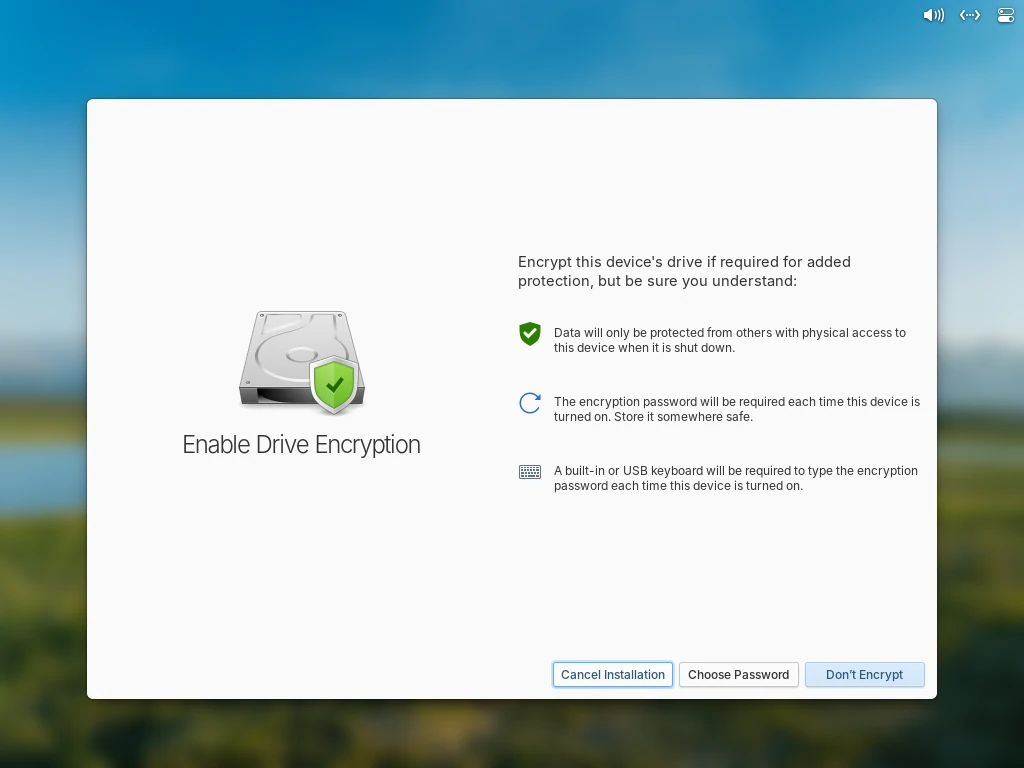
For optimal performance, especially with NVIDIA or AMD GPUs, it’s recommended to install proprietary drivers during installation.
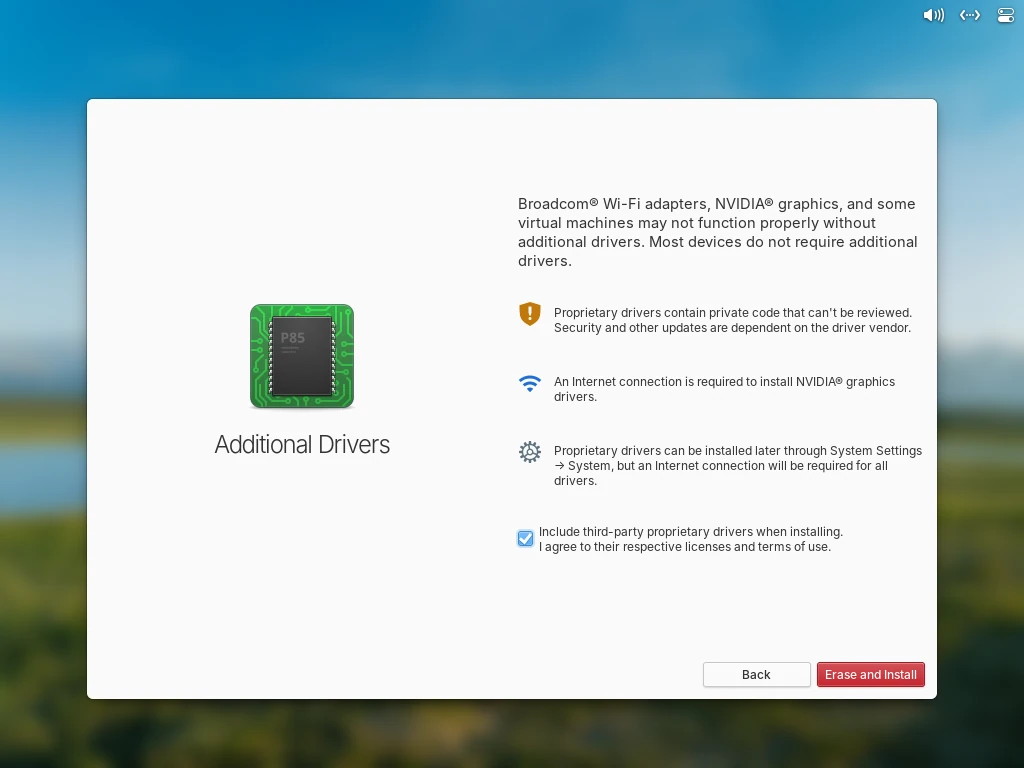
The installer will start installing the OS and configuring your system, which will take some time depending upon your system configuration and hardware.
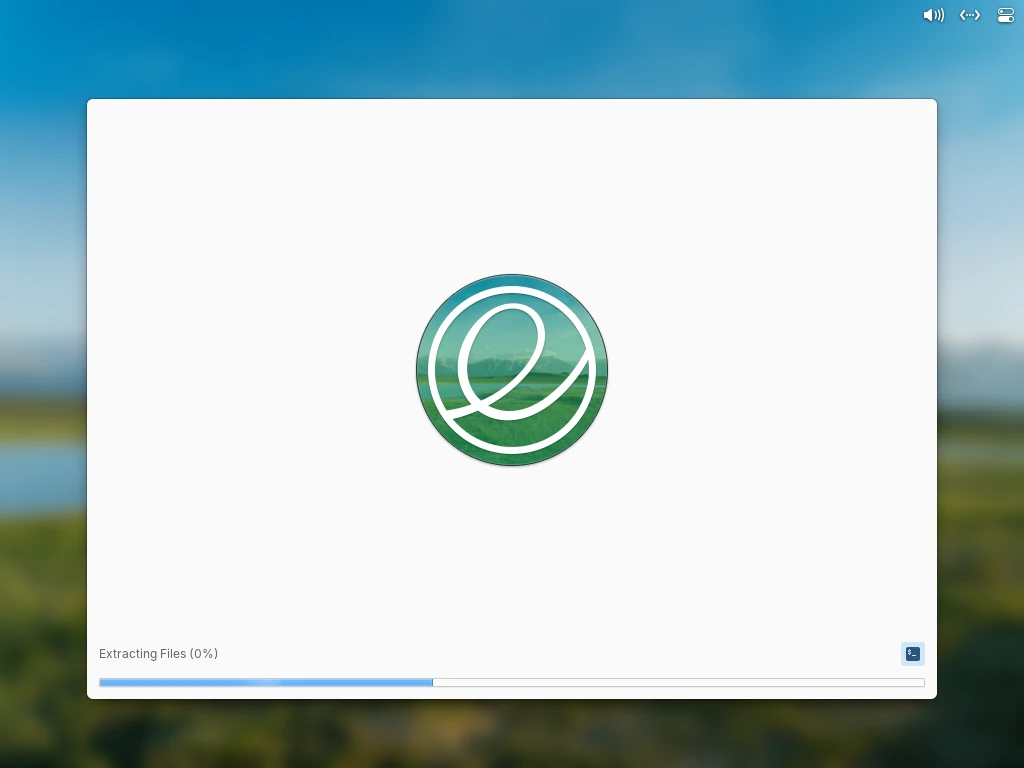
After installation is finished, you’ll be prompted to restart your system and make sure to remove the USB drive and hit Restart Device.
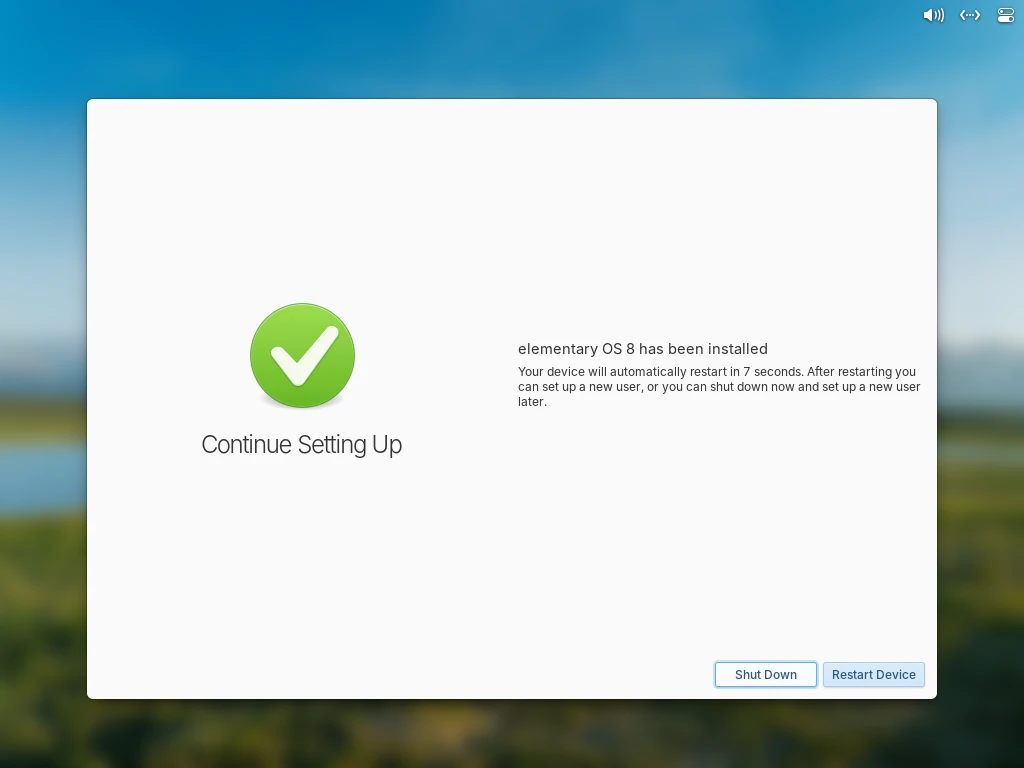
On the first boot, Elementary OS 8 will guide you through a quick setup, including signing into your account, connecting to Wi-Fi (if not already done), and configuring any additional settings.
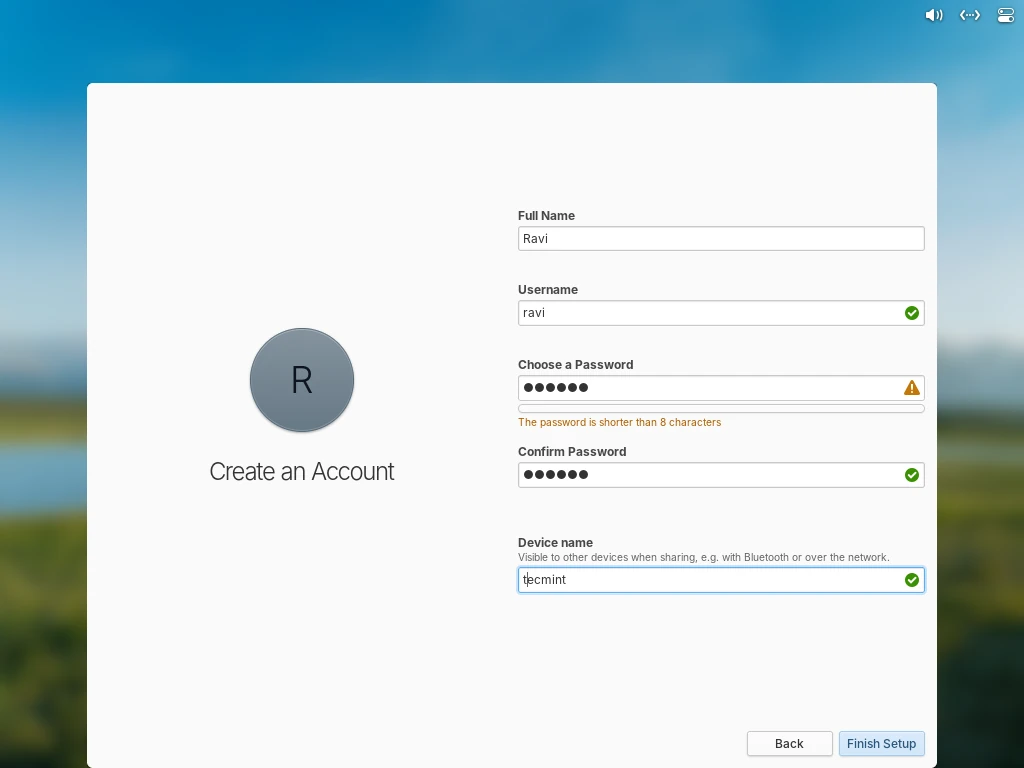
After creating a user account, you will get a login interface.
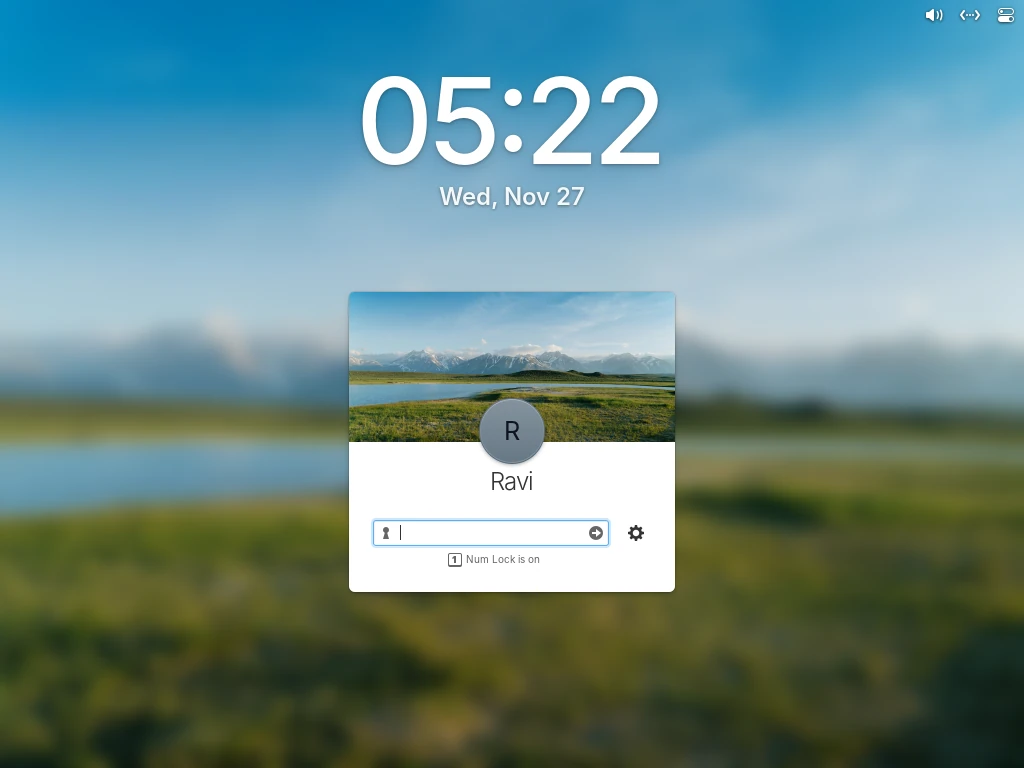
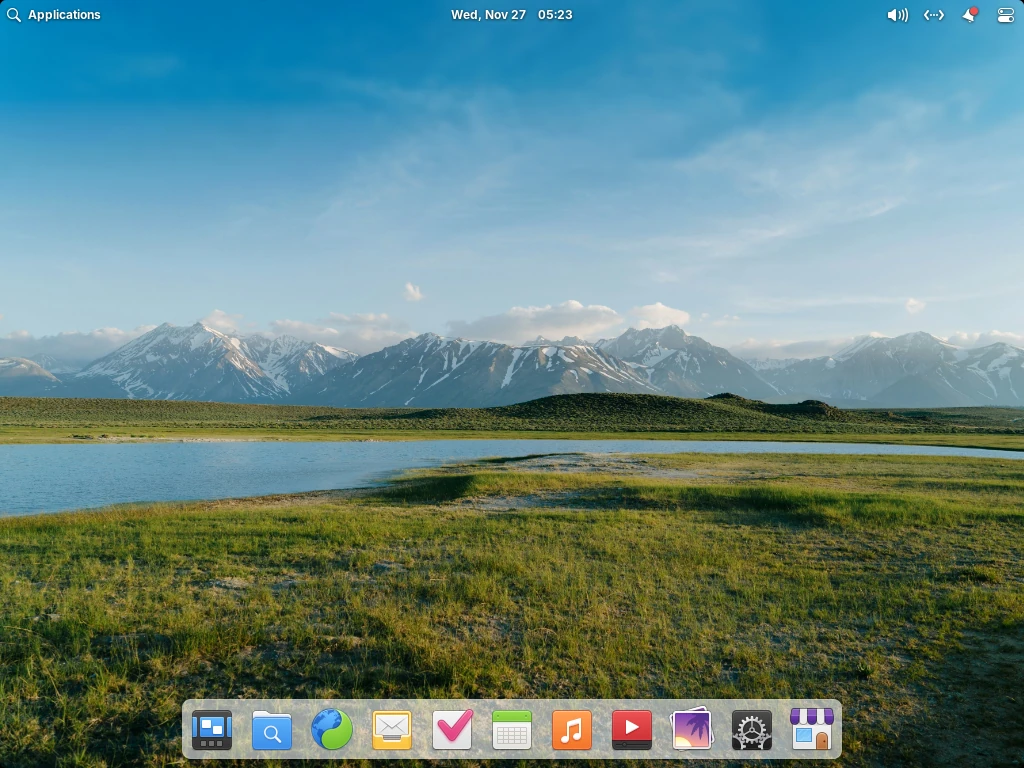
Conclusion
Elementary OS is truly impressive, and the installation process was quick and smooth. The installation was straightforward and easy. Unlike some other distributions, Elementary OS doesn’t overwhelm you with unnecessary applications. It installs only the essential applications, keeping things simple. The overall user interface is beautiful, and everything runs smoothly without any noticeable lag during testing.
Booting up and shutting down are fast too. I must say that Elementary OS is a fantastic GNU/Linux operating system that focuses on speed while being light on system resources. Whether you’re new to this distribution or an experienced user looking for a fast, low-maintenance OS, Elementary OS is a great choice.
Test out Elementary OS and let us know your thoughts. I’ll be back soon with another interesting article. Until then, stay tuned and stay connected with Tecmint. Don’t forget to share your valuable feedback in the comments below. Like and share our content to help us reach more people!



The best Elementary OS installation tutorial I’ve ever seen.
The most important thing while you explain that for mac users I got a question about Xcode as you knew the mac os developers all need Xcode to build any mac os products.
All Linux Distros are for Windows and Mac users. They just have to know about Linux and have an open enough mind to try a Linux Distro. A lot of Windows and Mac users fail on both those requirements. Oh look, Linux is not exactly the same as what I am using so back I go! Yet they looked at Linux because they were not satisfied with what they were using.
I am a windows user and want to swap elementry os ferya from windows to get faster performance. But I don’t know whether it supports following requirements or not:
1. Does freya supports java and android programming essentials?
2. Does it fully supports steam gaming client and its games?
3. Does any third party software needs to it for support above requirements?
@Furba,
Elementary OS supports everything from Java programming to Gaming….
Still haven’t gotten to square one. Installed onto usb key but can’t get past that point. Idiots [sorry, but true] at Elementary site offer zero advice and signup for forum is impossible [unexplained tags requirement defeated me].
Anyway, assuming i ever get past those two hurdles, i read that Docky is fixed. That’s a deal-killer for me. DO YOU KNOW OF ANY WAY TO STRIP IT [AND ANY OTHER SCREEN JUNK] AWAY FROM DESKTOP GUI???
Thanks for your time!
Im stuck at 5.. Installation type. I have elementary os freya in a USB installed trough unetbootin. I loaded elementary and when i get to point where i choose instalation options like erase disk, install along side.., something else there are three options like screenshot in this article but i can only click quit or back. Continue is grey and i cant continue whateaver option i try,, So i cant install elementary.. Any idea what can be the prob?
Thanks in advance
I have tried many distros over the years and although elementary has its limitations in customisation I have found it to be the most stable OS I have experienced, It is so simple and easy to use, my kids love it and pleaded with me to never put Windows back on. I think if you want to find an alternative to Windows which is easy for beginners and ideal for an everyday desktop, elementary OS is in my opinion is the best option. Thank you for your review. :-)
Thanks for the feedback @Stu,
Though it was not very stable at the time I was testing it but it is really a nice nice GNU/Linux OS. Those coming from Windows do not need to break a sweat. It is as user friendly as Ubuntu (even more than that) and guess what is the plus point? It don’t have as many bugs as Ubuntu.
Keep Connected!
it looks nice, been using elementary os luna for 1 year and a half and no problem at all unlike windows lots of viruses… keep the good work guys…
Keep Connected @sonny parra
hey, that /boot its like /home ?
im new in linux
no /boot is where essential booting files reside whereas /home is where user’s file reside.
I am very newbie in linux and not even an expert in computing. Have tried freya and i was really impressed. I loved it. It is like an experience in macOSX. But i had to remove it because
1. it is not user-friendly when it comes to installation of new apps. Only an expert in linux can do it.
2. cannot put something in the desktop even when there is a sidebar link for desktop. Desktop is useless.
3. it needs more codec for videos.
I agree with your point number 3. i Didn’t get your point number 2 and i disagree with your point number 1.
It is as easy to configure as any other Linux distribution with least things to do. Since the project has not attained maturity, it lacks a few things like video codecs, stability and others.
My Freda install gets stuck on the preparing to install screen. I also can’t get it to connect to my wifi network or recognize the Ethernet connection. Ideas?
*freya
If the installation is freezing, check if the installation image is as per your system architecture ie., 32 bit/64 bit.
If everything is ok and wifi is not working. seems you have an issue with your wifi driver. Test freya before you install from the boot menu and see if everything is ok? Let us know in detail for further assistance.
Its awesome going to download this..
@Vasanth, we would like to know your experience with Freya.
it really awesome. i installed and using it. But i need help to install theme XGTK. i could not get proper instruction
Yeah Its awesome.
What problem are you facing?
let us know
I’ve been playing around with various distrowat for years..this one (Freya) really did it for me. Man.. it’s just awesome. Others that come close to this: Uberstudent, and LXLE…
Yes Freya is awesome, though the project is still to attain maturity.